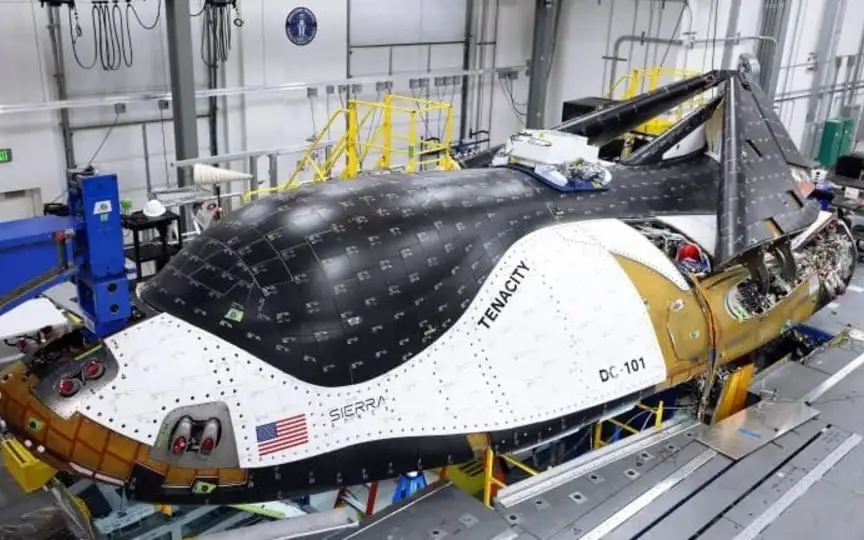NASA’s Final Countdown: Dream Chaser Spaceplane Ready to Resupply the ISS!
The field of commercial space technology is still relatively new. In the past, government-funded space agencies like NASA, ROSCOSMOS, JAXA, and ISRO were solely responsible for space exploration and technology development, using their findings to benefit their respective nations. It wasn’t until the emergence of Elon Musk’s SpaceX, Jeff Bezos’ Blue Origin, and Richard Branson’s Virgin Galactic that space technology started being seen as an entrepreneurial opportunity. However, even in 2023, there is still much untapped potential in this field. A prime example is Sierra Space’s Tenacity, the company’s first Dream Chaser spaceplane, which will be utilized for supplying the International Space Station (ISS).
The Dream Chaser space plane is an innovative concept mini-spacecraft that can launch vertically on a Vulcan Centaur rocket and land horizontally on runways. Its design resembles both an airplane and a spaceship. Sierra Space has been building the Dream Chaser since 2010, and this is the company’s first model to be completed and handed over to NASA for a final round of testing.
Tenacity, the Dream Chaser spacecraft, was handed over to NASA
“Today, we’ve reached a profound milestone in both our company’s journey and the future of our industry—one that’s been years in the making and shaped by bold dreaming and tenacious action,” said Sierra Space CEO Tom Vice. company.
The Dream Chaser space plane, which is 30 feet wide, will be used to replenish the ISS. It can carry 5500 kg, about half the weight of the shuttle. But it has the advantage that it can also receive cargo such as experiments and equipment back to Earth, which no other shuttle can do. In addition to that, it also offers environmental benefits because, according to the company, it is built to last for at least 15 space missions. It also has a sustainable propulsion and oxidizer fuel system, which lowers environmental and mission costs.
But perhaps the biggest piece of engineering on this machine is its heat dissipation design. Upon return, the space plane must withstand temperatures of over 1,650 degrees Celsius, but must be cool to touch minutes after landing. It must also be durable enough to go through the same process 15 different times.




